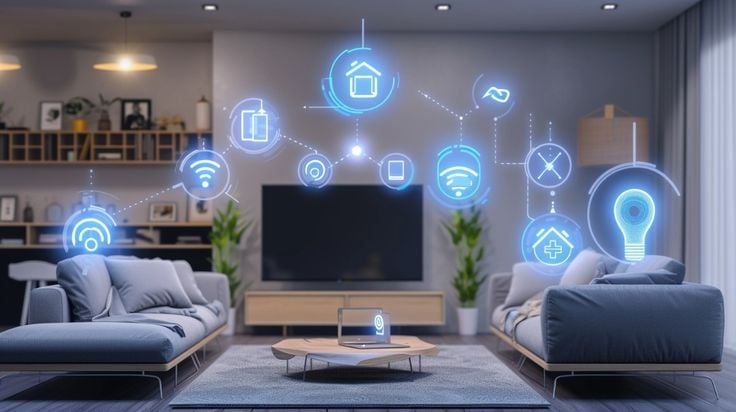Smart Homes in Kenya: Where Sustainable Living Meets Innovation

Across the world, “home” is being redefined. No longer just a place of shelter, the modern house has become an ecosystem – intelligent, sustainable and responsive to the needs of its occupants. This is the essence of smart housing and smart homes, a movement reshaping how cities function and how people live. While global real estate markets have already embraced this transformation, Africa – and particularly Kenya, stands on the cusp of an exciting evolution: merging smart innovation with the urgent demand for affordable housing.
What is Smart Housing?
Smart housing refers to residences that integrate advanced technologies to improve comfort, efficiency and sustainability. These homes often feature:
- Smart appliances that reduce energy and water use.
- Home automation systems (lighting, security, HVAC, entertainment).
- IoT integration that connects devices for real-time monitoring.
- Sustainable solutions like solar panels, rainwater harvesting and energy storage.
At its core, smart housing is about creating living spaces that think, respond and adapt -homes that save money, reduce environmental impact and elevate quality of life.
The Global Smart Housing Evolution
Globally, markets such as North America, Europe, and Asia-Pacific have seen exponential growth in smart housing adoption. According to Statista (2024), the smart home market is expected to reach US$182 billion worldwide by 2028, driven by urbanization, rising energy costs, and demand for convenience.
- In the US, smart thermostats and voice-controlled devices are now mainstream.
- In Europe, sustainability policies have accelerated green building certifications.
- In Asia (China, Singapore, South Korea), smart housing integrates with entire “smart city” projects, blending homes, transport and public services into one connected system.
The African and Kenyan Context
Africa’s smart housing journey is only beginning. The continent faces unique challenges including but not limited to rapid urbanization, limited infrastructure and affordability concerns. Yet these very challenges create opportunities for leapfrogging into innovation.
In Kenya, urban areas like Nairobi, Mombasa and Kisumu are expanding at unprecedented rates. Demand for affordable housing is high, with the government’s “Affordable Housing Programme” targeting 200,000 units annually. The question is: can these units also be smart?
Currently, Kenya’s smart housing adoption is concentrated in high-end developments – luxury apartments in Kilimani, Kileleshwa and Westlands often feature biometric access, CCTV integration, solar water heating, and backup power systems. But the bigger opportunity lies in scaling these solutions for middle-income and affordable housing markets.
Bridging Affordable Housing with Smart Innovation
The common misconception is that smart housing is synonymous with expensive housing. However, Kenya has a unique chance to merge affordability with innovation by:
- Leveraging renewable energy – Kenya already leads Africa in geothermal and solar power. Embedding low-cost solar panels in affordable housing can lower utility costs while promoting sustainability.
- Modular construction with IoT – Prefabricated building models can integrate simple smart systems (e.g., prepaid smart meters, solar-powered lighting).
- Public-private partnerships (PPP) – Developers, government, and tech firms can co-create scalable solutions. For example, local telcos could bundle internet + smart security with housing units.
- Policy and incentives – Tax breaks for green and smart housing technologies could make adoption viable in mass-market projects.
Recommendations for Kenya’s Smart Housing Future
- Focus on inclusivity: Smart housing shouldn’t remain a luxury niche; simple, affordable solutions (like prepaid energy monitoring) can make homes “smart” without being costly.
- Invest in digital infrastructure: Reliable internet, mobile penetration and IoT networks are the backbone of smart living.
- Capacity building: Train local architects, engineers and developers in smart housing technologies.
- Encourage innovation hubs: Support startups building localized smart housing solutions (e.g., low-cost solar IoT devices).
Future Trends to Watch
- AI-driven homes – Predictive energy management, personalized climate control.
- Green + smart fusion – Buildings that self-generate power, recycle water and manage waste.
- Integration into smart cities – Nairobi’s Konza Technopolis could pioneer large-scale adoption.
- Blockchain for real estate – Transparent transactions, digital ownership and smart contracts.
Conclusion
The promise of smart housing in Kenya is not just about futuristic living; it is about creating homes that are sustainable, affordable, and inclusive. By learning from global markets and leveraging local innovation, Kenya can build housing that not only shelters but empowers – homes that tell stories of resilience, progress and sustainable growth.
At Danco Limited, we believe the future of real estate is intelligent. Explore our properties and be part of Kenya’s smart housing journey.
References
- Statista. (2024). Smart Home Market Worldwide – Outlook 2024–2028.
- UN-Habitat. (2023). Affordable Housing in Africa: Challenges and Opportunities.
- Government of Kenya. (2024). Affordable Housing Programme Progress Report.
- World Bank. (2023). Green Building and Smart Housing Trends in Emerging Markets.

